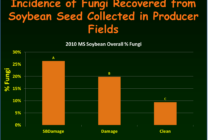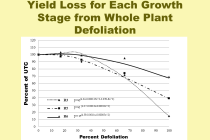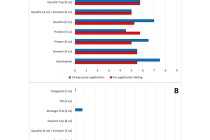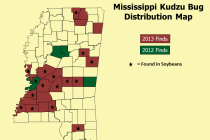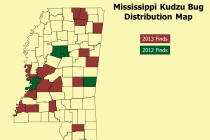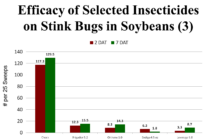Soybean Viruses Cause Important Diseases too
Virus-infected soybean material has been observed almost statewide this season. The high numbers of bean leaf beetles can be blamed for some of the observed viruses; however, bean leaf beetles are not the only insects that can vector soybean viruses between plants. This specific blog update presents information on the three most commonly encountered soybean viruses in the MS soybean production system.

